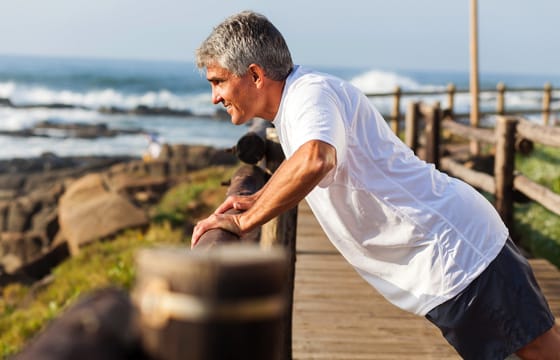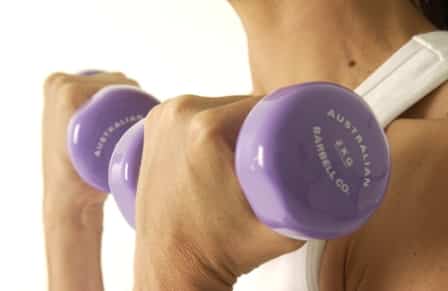October Newsletter

So how much exercise should I be doing?
The Australian Physiotherapy Association recommends …
Children and adolescents (aged 5-17 years)
At least 60 minutes of moderate to vigorous-intensity physical activity per day. Include activities that strengthen muscles and bone at least three times per week.
Adults aged 18 – 64 years
At least 150 minutes of moderate-intensity physical activity throughout the week (around 20 minutes per day, at a minimum) or at least 75 minutes of vigorous-intensity physical activity.
For additional health benefits, adults should increase their moderate-intensity physical activity to 300 minutes per week, or equivalent. Muscle-strengthening activities, involving major muscle groups, should be done on two or more days a week.
Adults aged 65 years and above
At least 150 minutes of moderate-intensity physical activity throughout the week, or at least 75 minutes of vigorous-intensity physical activity, or an equivalent combination of moderate and vigorous-intensity activity.
Those with poor mobility should perform physical activity to enhance balance and prevent falls, on three or more days a week. Muscle-strengthening activities, involving major muscle groups, should be done on two or more days a week.
QUICK TIPS TO KEEP YOU MOVING
- When injury occurs, it can be tempting to stop exercising all together and rest while you recover. Whilst an injury can be frustrating, but it can also be an opportunity to try out a different sport or physical activity. If you’re a runner with a calf injury, you can keep up your fitness by swimming instead.
- Cycling can be a great option for people for dealing with knee pain, and if you’re a swimmer with shoulder pain, maybe switch to jogging for a while. Check with your physiotherapist for some ideas to keep you moving.
- Take the opportunity to upgrade your footwear and equipment. Injury and pain can be a great prompt to look at your equipment and technique. For example, with hip and knee pain, the type of shoes you wear can have a significant difference. When it comes to footwear your local Podiatrists are also an excellent source of advice in this area, so don’t hesitate to ask for an assessment!

If you have any questions regarding osteoporosis give us a call on 3278 1186. We are currently taking a list of names of those interested in our upcoming twice weekly Bone Loading Exercise classes led by our Senior Physiotherapist Meredith. If you think you might be interested in joining this class or would like futher information don’t hesitate to call.
Osteoporosis is diagnosed via a bone density scan, otherwise known as a DEXA scan. You can obtain a referral for a DEXA scan from your GP. If you have any risk factors for osteoporosis, it is recommended you have a DEXA scan to confirm the diagnosis. If you are diagnosed with osteoporosis, it is important to have regular DEXA scans to monitor the progression of the disease.
As is the case with many diseases, the best treatment is prevention. Lifestyle risk factors such as smoking, alcohol use and high or low body weight can be addressed to reduce the risk. Increasing Vitamin D and calcium intake if it is low is also beneficial, whether it be via dietary intake, medications and/or increased sun exposure (Vitamin D). Exercise is an effective strategy to help improve bone density, but it has to be a specific type of exercise that involves weight bearing through your joints and gradually increasing resistance as able.
We run bone loading exercise classes in the clinic, supervised by one of our experienced physiotherapists. If you have been diagnosed with osteoporosis, treatment can help to improve your bone density with the prevention strategies listed above.
Need to get moving? … Check out the range of classes we offer below.
pOur CLINICAL EXERCISE CLASSES combine rehab exercises, strength, core, mobility & Pilates style exercises. These classes are particularly good for anyone with neck or lower back pain.
Our ACTIVELY AGEING CLASSES are ideal for women who want to stay fit & active. They combine strength, balance & core exercises in a circuit style setting.
Our BALANCE & STRENGTH CLASSES cater for our older clients that want to stay mobile. These classes have an emphasis on improving balance & fall prevention.
Our ANTENATAL & POSTNATAL CLASSES are a great way to ensure that you remain strong, flexible & stable during and after your pregnancy. Our Women’s Health Physio will guide you through a range of exercises tailored to your needs.
We run a YOGA CLASS (run by a qualified Yoga instructor). This is an ideal class for those wishing to remain flexible & strong but also wanting a stress relief/relaxation component to their class.
Please note: all classes require a physiotherapy assessment prior to joining unless you are currently seeing one of our physiotherapists for treatment or have seen us in the last 12 months. Classes can be claimed through most health funds. Contact physiotherapy Graceville today!!
